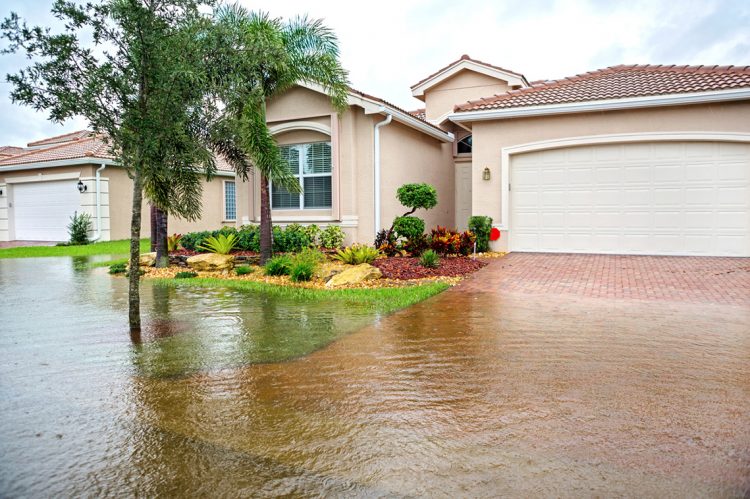While climate risks may not have dented demand for housing, they may be taking more of an active role in buyers’ and lenders’ decision-making processes, according to a new report from Zillow released this week.
The Zillow report, in partnership with ClimateCheck, found that an increase in flood risk corresponds with an increase in mortgage denials, and an uptick in would-be borrowers withdrawing their mortgage applications altogether. Still, homes are getting more expensive faster in places with more risk than they are in places with less flood risk.
Key highlights:
- Borrowers and lenders are second-guessing, as in 2021 census tracts with a 10 percentage point higher share of buildings at risk for flooding corresponded with a +0.23 percentage point mortgage denial rate.
- The same tracts were also associated with a +0.23 percentage point share of applicants who pulled their application before it was either denied or a loan was originated.
- High risk areas see a larger share of investment home purchases: the census tracts were associated with a -0.72 percentage point share of primary home applications and a +0.24 percentage point share of investment property applications in 2021.
- Borrowers are willing to put a little less money on the line in at-risk areas: the census tracts were associated with a +0.06 percentage point value in the median loan to value ratio on mortgage applications.
- Other climate risks—fire, drought, heat and storm—seem to have little impact on mortgages, as the share of overall purchase mortgage applications for second liens was lower in 2021 in census tracts that have a higher risk of fire damage than in tracts with a lower risk.
Major takeaway:
“The higher rates of mortgage application denials and withdrawals in high-flood-risk areas are an encouraging signal that buyers and lenders are more often including flood risk in their decision-making,” said Zillow senior economist and report author Nicole Bachaud. “Living around desirable coasts and other bodies of water, which tend to be more flood-prone areas, will continue to be a draw for home buyers, but more and more are considering the additional risk. We have not yet seen other types of climate risk make a dent in home-buying practices, so there is a lot of room left for change and continued education.”
For the full report, click here.












